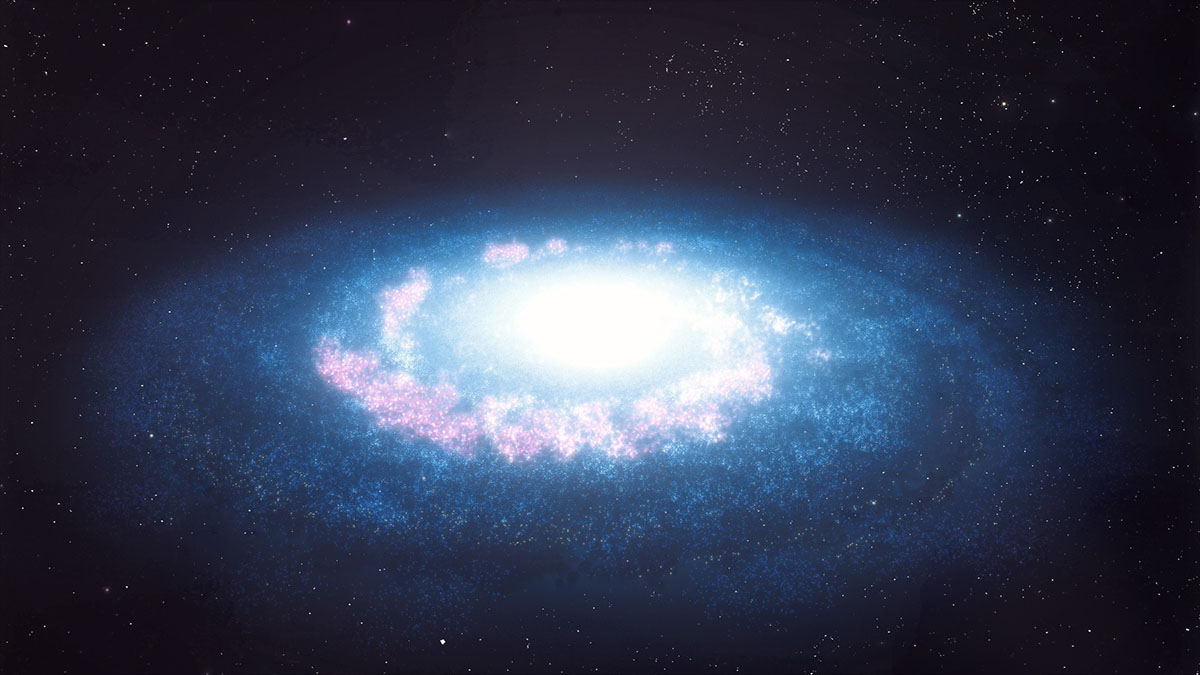galaxies without dark matter may actually be full of it

Earlier this year, reports of observations of two galaxies called NGC 1052-DF2 and NGC 1052-DF4 were treated as potential proof that dark matter must be made of actual particles and is not a phenomenon caused by time, space, and gravity we’re not quite sure how to explain yet. Because they were so diffuse and lacked the necessary mass to require a halo of dark matter around them, like all other galaxies we’ve observed so far, astronomers were busy coming up with hypotheses for how it could have happened. After decades of seeing galaxies exhibit the same behaviors and properties, these hyper-diffused oddballs were real head-scratchers.
Most of their concerns were focused on potential distortions form much more massive nearby galaxies which could have somehow influenced the objects in question with their gravity wells at some point during their lives. Maybe there was some tidal stripping that peeled away most of their dark matter, or there was a collision and these galaxies are recovering. But it turns out the explanation may be even simpler than that. After taking another look at the observational data, a team of researchers found that the distance of NGC 1052-DF2 from Earth was off by as much as 22 million light years.
Initial estimates made it twice as heavy, so with the revised distance, the combined mass of its stars accounted for just a quarter of the galactic heft we thought we were seeing. So, in other words, when the galaxy’s mass, spin, and other factors are plugged into the relevant equations with the adjusted distance, it suddenly becomes very typical and needs to have a massive dark matter halo to explain its dynamics. Unfortunately, this also means we’re back to square one as far as the question of what dark matter is, having no new insight into its properties or behavior, and leaving the room wide open to modified theories of gravity and other attempts to treat it as an emergent property of space instead of actual matter.
One of the most annoying things to a scientist is not knowing why something behaves the way it does, especially if it doesn’t fit into existing models. In a way, the notion that DF2 was just a mistake in estimation is comforting because it conforms to the mold. But it’s also frustrating because, again, it tells us nothing new about the nature of the universe as we hoped it would. Rather than seeing it as a vindication of a theoretical framework, we should probably take it as a small setback in the quest to figure out what is the dark stuff that accounts for the majority of the mass and motion in the cosmos.
See: Trujillo, I. et al. (2019) A distance of 13 Mpc resolves the claimed anomalies of the galaxy lacking dark matter, MNRAS, DOI: 10.1093/mnras/stz771





